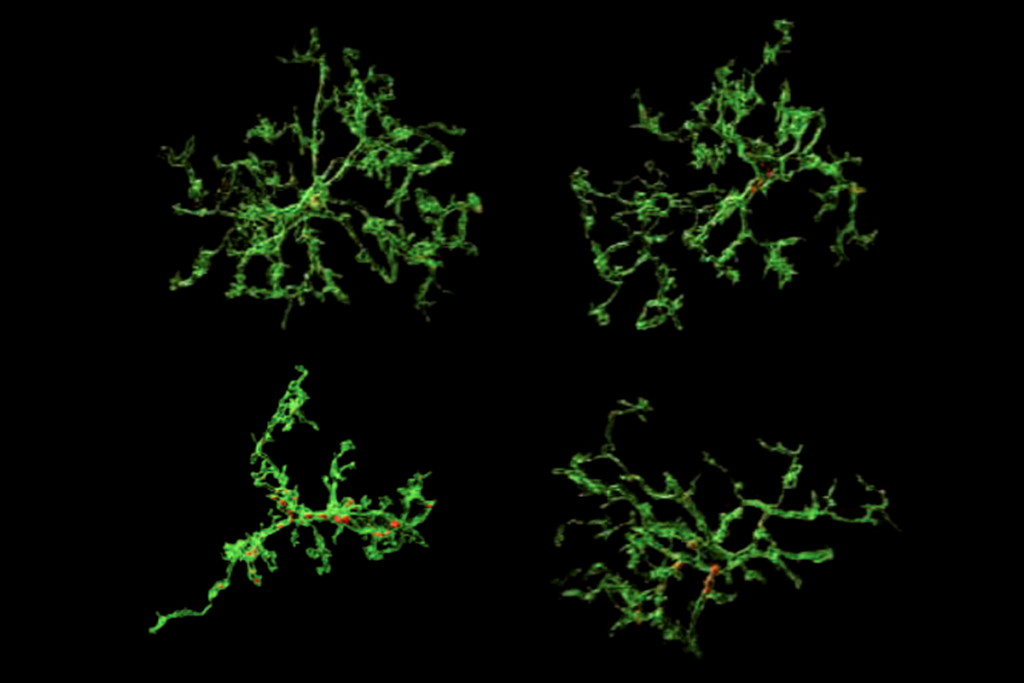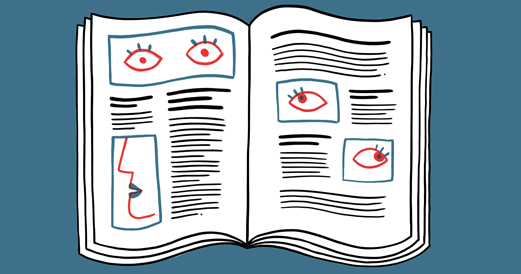Linkage study reveals parent-of-origin effects in autism
The first genome-wide linkage analysis of more than 1,200 families has identified regions implicated in autism as originating from either the paternal or maternal copies of chromosomes.
The first genome-wide linkage analysis of more than 1,200 families has identified genetic regions implicated in autism as originating from either the paternal or maternal copies of chromosomes.
The strongest linkages occur in regions on the paternal copies of chromosomes 4, 15, and 20 and weaker, albeit suggestive, links on maternal copies of chromosomes 5, 6, 7 and 9. Each of these chromosomes harbors genes associated with autism risk.
“What we’ve demonstrated is that, more often than not, the effect is due to one parent rather than another,” says Aravinda Chakravarti, professor of molecular biology and genetics at the Johns Hopkins School of Medicine in Baltimore.
Earlier genome-wide studies looking at genes shared between parents and children with autism have looked at only a few dozen families. The new study, published online in PLoS ONE in September, is much larger and includes many families in which more than one child is affected1.
Many of the regions that show strong statistical links with autism in this study have either cropped in earlier studies of the disorder, or are associated with genes or pathways thought to be relevant.
The region on chromosome 4 that shows up in the analysis, for example, harbors a gene called CLOCK that helps regulate circadian rhythm. Many children with autism are reported to have sleep disorders2.
Silent copies:
The clear linking of each chromosome to one parent suggests that at least some of the genes in these regions might be imprinted — meaning that either the maternal or paternal copy of the gene has been completely turned off or ‘silenced,’ often by the addition of a methyl group to DNA.
About 50 imprinted genes have been discovered in mice and humans, many of them expressed in the brain, and researchers have long suspected that imprinted genes may play a role in some cases of autism3.
Appropriate expression of imprinted genes is important for normal development, but the process sometimes goes awry. When the active copy of an imprinted gene is flawed in some way, the silenced copy cannot correct the error.
For example, Angelman syndrome results when the maternal copy of a gene called UBE3A on chromosome 15 is silenced; Prader-Willi syndrome occurs when the paternal copy of the same gene is turned off.
The first step in discovering which genes, if any, are imprinted in significant numbers of people with autism is to scan the whole genome and look for parent-of-origin effects in families. It’s an undertaking with a slim margin of success and, until fairly recently, could only be accomplished crudely, and on a small scale.
“Genome-wide linkage studies in autism have been few and far between, simply because the technology to cover the genome effectively did not exist,” says Chakravarti. “We now have the technology to go back and revisit this issue.”
Chakravarti and his colleagues looked at 16,000 single nucleotide polymorphisms (SNPs) — variations in a single DNA base — in families with one or more children diagnosed with an autism spectrum disorder.
The study, which includes 993 families from the Autism Genetic Resource Exchange and 223 families from the National Institute of Mental Health Autism Genetics Initiative, used DNA from both parents and children.
Odds ratio:
In genome-wide linkage studies like this one, researchers generate a logarithm of odds (LOD), a score that indicates whether a given SNP is shared. A LOD score of greater than three is considered strong evidence of linkage, representing 1000-to-1 odds that it did not occur by chance.
“The most striking thing about this study is that the LODs are very impressive,” says Bernard Crespi, professor of evolutionary biology at Simon Fraser University in Canada, who was not involved in the study. Crespi notes that the study found LODs above three on chromosomes 4, 15 and 20, adding, “It’s nice also to see that the linked regions have been identified in previous work [on autism].”
Chakravarti says the most important finding is the region on chromosome 15, host to a number of genes with plausible connections to autism, including RASGRF1, NRG4 and CHRNA3/B44,5,6.
One region on chromosome 20 turned up in another gene mapping study last year, and deletions in the region have been reported in cases of autism7.
Crespi plans to compare Chakravarti’s results with parent-of-origin effects in mouse models of autism to detect any overlap between chromosomal regions. “There’s pretty good conservation of imprinting in mice,” Crespi says. “It might provide some clues about possible candidate genes.”
He points out that the ultimate goal is to deduce which pathways and mechanisms are involved. “Imprinted genes tend to interact with other imprinted genes,” he says. “Understanding those networks is what’s important.”
Though linkage studies can turn up provocative leads, they can’t prove that a specific chromosome or gene is a culprit in autism or any other disorder. Similarly, establishing that a chromosome is inherited from a specific parent does not provide proof of imprinting.
“That is the most exciting hypothesis, of course, but there are other ways to produce parent-of-origin effects as well,” Chakravarti says. “We have to look at this again and understand the details of which genes are involved and what the specific mechanisms are.”
References:
-
Fradin D. et al. PLoS ONE 5, e12513 (2010) PubMed
-
Wimpory D. et al. J. Intellect. Disabil. Res. 46, 352-358 (2002) PubMed
-
Cook E.H. Jr. et al. Hum. Genet. 60, 928-934 (1997) PubMed
-
Davies W. et al. Neurosci. Biobehav. Rev. 29, 421-430 (2005) PubMed
-
Zhang C. et al. J. Neurosci. 29, 10843-10854 (2009) PubMed
-
Lee M. et al. Brain 125, 1483-1495 (2002) PubMed
- Weiss L.A. et al. Nature 461, 802-808 (2009) PubMed
Recommended reading

Functional connectivity links with autism, not ADHD; and more

Ramping up cortical activity in early life sparks autism-like behaviors in mice

New method identifies two-hit genetic variation in autism; and more
Explore more from The Transmitter
Daniel Nicholson discusses how Schrödinger’s book ‘What is Life?’ shaped years of biology, research

Our searchable repository of useful research can restore trust in federally funded basic science
